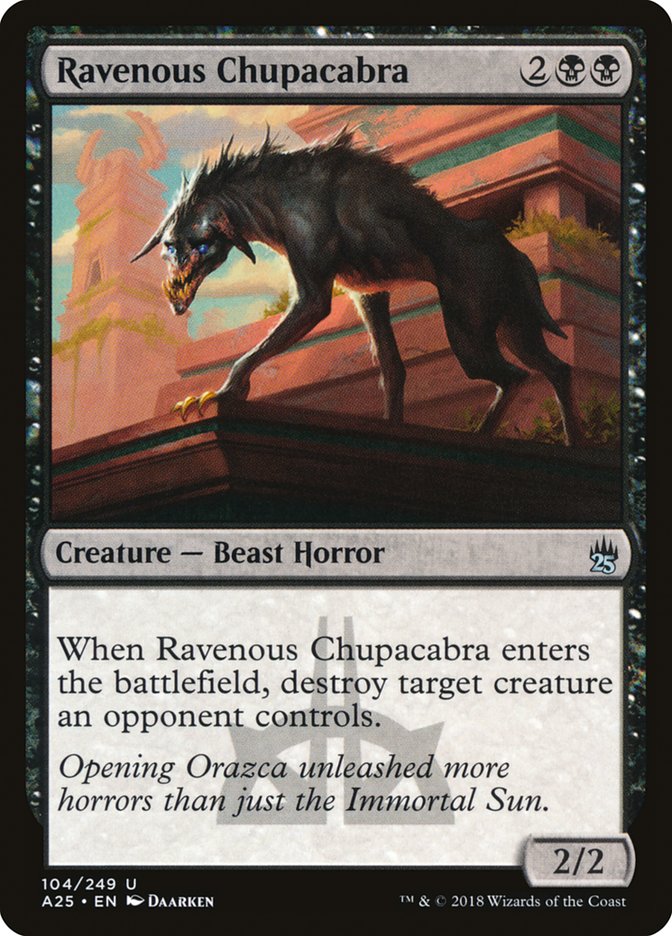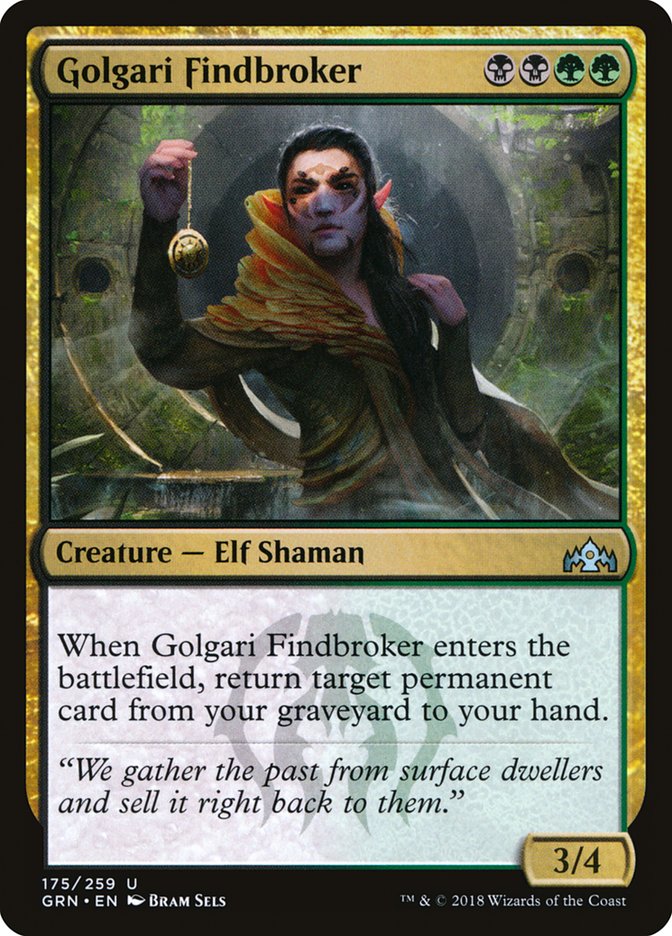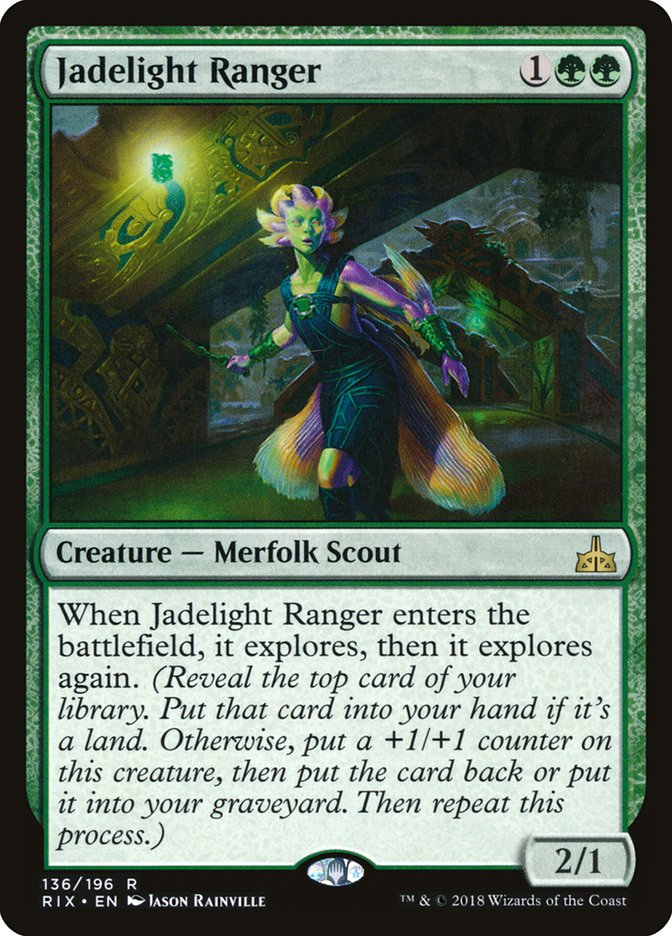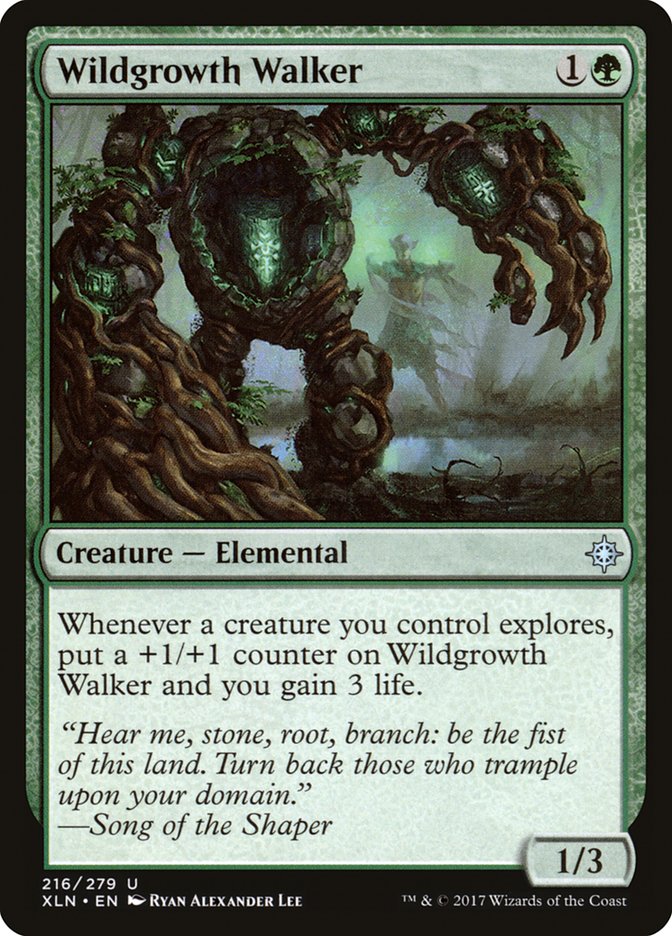Week one of Guilds of Ravnica Standard is in the books.
With three big events worth of results to look at between a Team
Constructed Open, Standard Classic, and Magic Online PTQ, things are
shaping up, Standard is in bloom and it’s a beautiful sight to see. With
three different decks coming out on top of these three diverse events, with
what looks to be wildly varied metagames between them, it’s going to be
really exciting to see how everything shapes up.
In classic week one tradition, a lot of copies of Mountain were in the Top
8 of the Open in Columbus, but we saw a Selesnya Tokens mirror match in the
battle for the trophy. Both Mono-Red Aggro and Selesnya Tokens were decks
that a lot of players expected to be strong, but I think wound up
underestimated and underprepared for despite the fact they were such
obvious decks. It’s very easy for the sleekest, most streamlined decks to
look the most appealing at the very dawn of a Standard format because they
simply are the most refined and will punish decks that still need to be
dialed in. This can be seen in the results of the MTGO PTQ, and to a lesser
extent, Sunday’s Classic where people had been given more time and
information to clue in to beating the more familiar faces of the format
like Goblin Chainwhirler and History of Benalia. On Monday,
Ari Lax took the time to talk about the Top 8 of the PTQ
and he said a lot of great stuff about where the format is headed, but
today I want to talk some more about the deck that won it.
Creatures (21)
- 4 Llanowar Elves
- 4 Merfolk Branchwalker
- 4 Jadelight Ranger
- 3 Ravenous Chupacabra
- 1 District Guide
- 3 Golgari Findbroker
- 2 Plaguecrafter
Planeswalkers (7)
Lands (24)
Spells (8)

Golgari Midrange was definitely not what I expected to see taking that
number one spot when I looked at the results of the event, as it’s not
often that decks like this perform this early in a format. Then again, the
whole Top 8 of the PTQ was made up of eight decks I wouldn’t have bet on to
win, but I think that’s just proof of how much faster the MTGO metagame can
move than paper does. Among all the week one winners in Standard, I think
Golgari is particularly interesting because of how much depth there is in
the archetype and how much exploring there really is to do within the
archetype.
Not counting the Sultai Midrange variants that were fundamentally similar
to the Golgari Midrange decks that saw success over the weekend, there were
not three, not four, but five distinct
approaches to the archetype that I counted when I went in to break it down.
For one color pair, that’s a lot of divergence, so before I talk about the
differences, I want to establish what’s the same.
These cards are some of the most efficient ways to generate value in the
format, and for the most part they’re an auto-include in some number among
the Golgari decks we saw over the weekend. Really though, this is where the
universal card choices begin to end.
With a deck like this, often the principles in the way the deck is built
are similar, and the methods are what differ as nobody knows what the best
way to build the deck really is. Take, for example, the differences between
the PTQ winning decklist above and the following from the Top 8 of the
Classic:
Creatures (30)
- 4 Merfolk Branchwalker
- 1 Seekers' Squire
- 1 Thrashing Brontodon
- 4 Jadelight Ranger
- 3 Ravenous Chupacabra
- 4 Stitcher's Supplier
- 2 Izoni, Thousand-Eyed
- 4 Molderhulk
- 2 Golgari Findbroker
- 3 Glowspore Shaman
- 2 Plaguecrafter
Lands (24)
Spells (6)

The way each of these decks are built is drastically different, but the
heart of what they’re doing is the same:
-
Step 1: Play creatures that have an impact on the battlefield and
generate virtual or real card advantage. - Step 2: Pull ahead with two-for-one exchanges.
-
Step 3: Use a big haymaker or some form of engine to put the game
out of reach for the opponent.
This is the barebones structure of the gameplan of most creature-based
midrange decks, and usually the rest is utilizing removal on the right
cards to keep your plan on track.
For most lists, step one has been relying on the explore creatures from Ixalan to help hit land drops and develop a presence on the
battlefield. Evan Whitehouse’s deck also used this time to set up some
powerful graveyard synergies as well as ensuring he hit his land drops with
Glowspore Shaman and Stitcher’s Supplier. Having these cards early means
that more often your copies of Find feel more like a Dig Through Time than
a meager Divination, and Izoni, Thousand-Eyed looks more like a degenerate
Spider Spawning than just a Hornet Queen. Additionally, this enables the
lategame potential of Molderhulk alongside Memorial to Folly outpace that
of The Eldest Reborn and Golgari Findbroker in a long game, or even just
seal a game quickly like a Doom Whisperer would.
Contrast that against the PTQ decklist forgoing a card that has received
heavy praise in Find for some flexible planeswalkers like Vraska, Relic
Seeker and Vivien Reid. By not worrying about those synergies, this deck
leans more on the raw power of its cards and has more room for clean,
efficient removal in Cast Down and Assassin’s Trophy. A byproduct of this
is also having room for Llanowar Elves to enable some very powerful starts
and be a permanent immediately ready for consumption by Vraska, Golgari
Queen. Personally, I like the look of this deck a lot more than some of the
more synergy-driven graveyard strategies, but I think the ceiling on how
powerful those decks can be is a lot higher.
For example, let’s look at a much more synergy-driven deck from the Classic
over the weekend.
Creatures (30)
- 4 Llanowar Elves
- 4 Wildgrowth Walker
- 3 Merfolk Branchwalker
- 4 Seekers' Squire
- 4 Jadelight Ranger
- 1 Ravenous Chupacabra
- 1 Plague Mare
- 2 Izoni, Thousand-Eyed
- 1 Molderhulk
- 2 Doom Whisperer
- 4 Plaguecrafter
Lands (23)
Spells (7)

This deck from the Top 16 really piqued my interest as soon as I saw the
full playset of Gruesome Menagerie. I was already interested, but then I
saw something I’d seen in the other sideboards had made its way over to the
maindeck:
I’ve seen some of the things that Wildgrowth Walker can do, and it almost
feels like a Runaway Steam-Kin in the way it can snowball out of control,
and this deck is really pushing the explore synergies with all its
two-drops. One thing that disappointed me in looking at this deck was that
it only had Llanowar Elves as one-drops to return with Gruesome Menagerie
when it feels like there must be another one-mana creature worth having in
the deck. Stitcher’s Supplier is an obvious standout, although I assume
Zach had a reason not to play such an obvious inclusion, but a couple
copies of Pilfering Imp might not be the worst thing to clear the way for
resolving a Menagerie or stripping their hand of an important threat. The
1/1 body isn’t even very irrelevant with the full playset of Plaguecrafters
in the maindeck that serve as a way to trade up. There’s a lot to test out
here, but I don’t think we should get much crazier than this. As the format
develops, being present and up to date is the most important thing you can
do.
It’s time to put brewing on the backburner, tuning is what’s important
right now. So, as far as tuning the Golgari deck goes and finding the right
build, what do we know?

If we think of Golgari as a “Meat and Potatoes” kind of deck, these would
be the potatoes. This will make up most of your early game and really form
the heart of your deck in whatever packages are right for beating the decks
you expect. As we see the field slow down to adapt, it’s likely we’ll see
less Wildgrowth Walker and more value creatures start working their way
into the deck.
Understanding how to build the creature base of any midrange deck is very
important and luckily, Golgari has a lot of tools at its disposal to
facilitate different gameplans right now.

These cards are your meat. They’re the ones that are making up the
substance of our gameplan that makes the whole thing worthwhile. Some
combinations of these will always find their way into your deck, since
they’re the premium cards that are good at just about any time you can cast
them. They really go a long way in keeping you ahead or putting your
opponent behind with their flexibility, and you wouldn’t be a midrange deck
without them.
As a rule of thumb, your deck is probably only as good as these cards are
in the format you’re looking at, and you should plan accordingly.

This is the gravy that ties everything together. Picking the right way to
end the game for the format is one of the most important decisions that you
make in deckbuilding. If Vraska’s Contempt comes back in a big way as a
staple four-of in most decks, cards like Molderhulk and Vraska, Relic
Seeker start looking much worse.
If that’s the case, maybe looking towards building with Izoni,
Thousand-Eyed or Gruesome Menagerie is the right way to build Golgari so
you can get more lasting impact out of your high mana spells than just a
2/2 or a land. If Vivien Reid is a premier planeswalker in many Standard
decks, it could be that Doom Whisperer is more of a liability than you need
it to be and instead you look somewhere else for your haymakers.
Threats and answers are all contextual, and there are definitely ways to
punish them one way or the other.

Speaking of answers, consider them that side of vegetables that you know
you should have, and in most cases, taste good to boot. One of the best
things about being in Golgari is that black has some of the best removal
around, so making sure the package you include is appropriate will likely
be pretty simple, but it shouldn’t be something you neglect.
As the format develops week to week, consider if a card like Dead Weight or
Vraska’s Contempt is going to be a better answer, or, if Selesnya Tokens is
a big presence in the metagame, maybe fewer copies of Plaguecrafter are in
order and something like Plague Mare finds its spot.
Assassin’s Trophy was underplayed this weekend. With cards like
Experimental Frenzy being more prevalent than cards like Rekindling
Phoenix, the efficiency and flexibility of Assassin’s Trophy was probably a
much bigger upside than two life. As more people figure out how to use the
extra land they get from Assassin’s Trophy rather than trying to play to
strategies that work around it, it might be worth paying twice as much for
a good answer, but only time will tell.
There’s still a lot of decklists to look at and digest, so I can’t give out
a Golgari decklist I’m confident in just yet. By the time the weekend
comes, who knows if what I built today would even be accomplishing the
right things? Standard looks to be as healthy as ever, and I’m really
excited to have moved on from the brewing stage to the tuning stage of the
format. If you take the time to keep up with the trends in the format,
Golgari is sure to reward you as a deckbuilder and a player.
I can’t wait to see how it shapes up.





